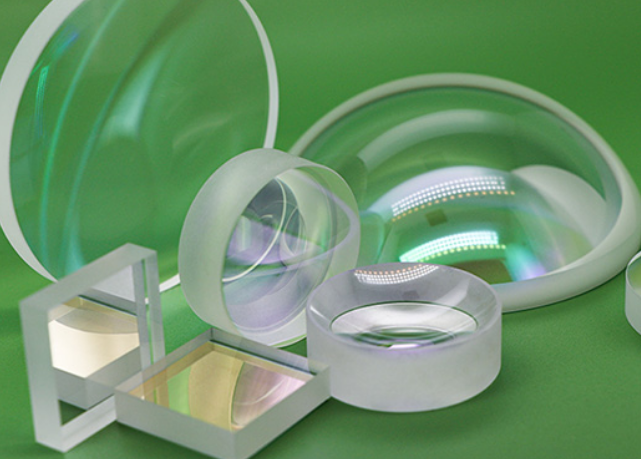Achromatic Lens Properties and Applications
Aug. 14, 2024
An ordinary achromatic lens is a lens group designed to correct chromatic aberration for three specific wavelengths: blue, green, and red light.
In this lens group, a converging lens focuses blue light closer to the focal point, while a concave lens disperses blue light more effectively. By combining these two lenses, the chromatic aberration for red and blue light is minimized, effectively merging them and reducing overall chromatic aberration. The crescent-shaped surface of the lens helps limit spherical aberration and coma, though astigmatism and distortion may still occur. Originally, achromatic lenses were commonly used for landscape photography, hence the name "Landscape Lens."
The lens has a crescent-shaped (concave-convex) design and is constructed by bonding two lenses with different refractive indices and dispersion rates. The first achromatic lens was created in 1821 by bonding a flat concave lens with a double convex lens. It was later improved in 1857 to feature the crescent shape. Over time, multilayer bonded achromatic lenses were developed to further enhance optical performance.
Achromatic lenses are constructed by bonding concave and convex lenses made from two different types of glass with distinct optical properties
The convex lens is typically made of crown glass, which has a lower refractive index and higher dispersion capability, while the concave lens is made of flint glass, characterized by a higher refractive index and lower dispersion capability.
Achromatic lenses are designed to align the focal points of two specific wavelengths of light, effectively eliminating chromatic aberration for those wavelengths. For instance, in ophthalmic instruments where direct observation by the eye is crucial, the chromatic aberrations of the C-line (656.3 nm wavelength red light) and F-line (486.1 nm wavelength blue light) are corrected. For camera lenses, chromatic aberrations of the D-line (589.3 nm wavelength yellow light) and G-line (430.8 nm wavelength purple light) are addressed to improve image quality. Although some residual chromatic aberration may remain for other wavelengths, the impact is minimal for most applications, allowing the lens to be considered effectively free of chromatic aberration.
Two-Piece Achromatic Lens
The two-piece achromatic lens is the simplest form of achromatic lens and comes in two variations: double bonded and double separated. Achromatic lenses can also be made from multiple lens elements depending on the specific application requirements.
Lenses with larger apertures are typically of the double-separated type, where the two lenses are assembled in the frame with a gap between them. This gap effectively acts as a third lens, enhancing the ability to correct chromatic aberration across a broader range of wavelengths compared to bonded lenses. This design allows for better balance of image aberrations, making double-separated achromatic lenses ideal for wideband imaging applications, offering excellent overall performance.
Applications of Achromatic Lenses
These lenses are designed to minimize chromatic aberration, a common optical phenomenon that causes color fringing and reduces image sharpness. Achromatic lenses are widely used in various applications, from astronomical telescopes to high-resolution microscopes, ensuring that light dispersion is effectively corrected.
Achromatic lenses can not only eliminate chromatic aberration but also eliminate spherical aberration by appropriately changing the curvature radius of each surface. If the two glasses that make up the bi-concave lenses can be selected arbitrarily, it can also eliminate coma. There are achromatic lenses designed to correct the chromatic aberration of three or four colors, resulting in minimal residual chromatic aberration. However, due to the complexities in design and manufacturing, these lenses are typically reserved for specialized applications.
In more complex optical systems, multiple achromatic lenses are often used together. High-quality microscope objectives, camera lenses, and other advanced optical systems employ these combinations to eliminate chromatic aberration as well as various monochromatic aberrations. Even simpler devices, like box cameras and children's cameras, often incorporate achromatic lenses to improve image quality.






















